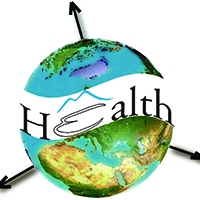Does the Geohealth domain require a body of knowledge?

Published: 29 November 2022
Abstract Views: 1381
PDF: 531
HTML: 21
HTML: 21
Publisher's note
All claims expressed in this article are solely those of the authors and do not necessarily represent those of their affiliated organizations, or those of the publisher, the editors and the reviewers. Any product that may be evaluated in this article or claim that may be made by its manufacturer is not guaranteed or endorsed by the publisher.
All claims expressed in this article are solely those of the authors and do not necessarily represent those of their affiliated organizations, or those of the publisher, the editors and the reviewers. Any product that may be evaluated in this article or claim that may be made by its manufacturer is not guaranteed or endorsed by the publisher.
Similar Articles
- Manuel O. Espinosa, Francisco Polop, Camilo H. Rotela, Marcelo Abril, Carlos M. Scavuzzo, Spatial pattern evolution of Aedes aegypti breeding sites in an Argentinean city without a dengue vector control programme , Geospatial Health: Vol. 11 No. 3 (2016)
- Xavier Barber, David Conesa, Silvia Lladosa, Antonio Lòpez-Quílez, Modelling the presence of disease under spatial misalignment using Bayesian latent Gaussian models , Geospatial Health: Vol. 11 No. 1 (2016): Valencia Issue
- Leonard E.G. Mboera, Veneranda M. Bwana, Susan F. Rumisha, Grades Stanley, Patrick K. Tungu, Robert C. Malima, Spatial abundance and human biting rate of Anopheles arabiensis and Anopheles funestus in savannah and rice agro-ecosystems of Central Tanzania , Geospatial Health: Vol. 10 No. 1 (2015)
- Renke Lühken, Jörn Martin Gethmann, Petra Kranz, Pia Steffenhagen, Christoph Staubach, Franz J. Conraths, Ellen Kiel, Comparison of single- and multi-scale models for the prediction of the Culicoides biting midge distribution in Germany , Geospatial Health: Vol. 11 No. 2 (2016)
- Amare Sewnet Minale, Kalkidan Alemu, Mapping malaria risk using geographic information systems and remote sensing: The case of Bahir Dar City, Ethiopia , Geospatial Health: Vol. 13 No. 1 (2018)
- Carla V.V. Rollemberg, Marília M.B.L. Silva, Karla C. Rollemberg, Fábio R. Amorim, Nayanna M.N. Lessa, Marcos D.S. Santos, Acácia M.B. Souza, Enaldo V. Melo, Roque P. Almeida, Ângela M. Silva, Guilherme L. Werneck, Mario A. Santos, José A.P. Almeida, Amélia R. Jesus, Predicting frequency distribution and influence of sociodemographic and behavioral risk factors of Schistosoma mansoni infection and analysis of co-infection with intestinal parasites , Geospatial Health: Vol. 10 No. 1 (2015)
- David Taylor, Michael Hagenlocher, Anne E. Jones, Stefan Kienberger, Joseph Leedale, Andrew P. Morse, Environmental change and Rift Valley fever in eastern Africa: projecting beyond HEALTHY FUTURES , Geospatial Health: Vol. 11 No. s1 (2016): HEALTHY FUTURES
- Huijie Qiao, Paanwaris Paansri, Luis E. Escobar, Global Mpox spread due to increased air travel , Geospatial Health: Vol. 19 No. 1 (2024)
- Ana Carolina Lopes Antunes, Els Ducheyne, Ward Bryssinckx, Sara Vieira, Manuel Malta, Yolanda Vaz, Telmo Nunes, Koen Mintiens, The dog and cat population on Maio Island, Cape Verde: characterisation and prediction based on household survey and remotely sensed imagery , Geospatial Health: Vol. 10 No. 2 (2015)
- Amalia Naranjo Lucena, María Pía Munita Corbalán, Ana María Martínez-Ibeas, Guy McGrath, Riona Sayers, Grace Mulcahy, Annetta Zintl, Validation of a spatial liver fluke model under field conditions in Ireland , Geospatial Health: Vol. 13 No. 1 (2018)
<< < 5 6 7 8 9 10 11 12 13 14 > >>
You may also start an advanced similarity search for this article.

 https://doi.org/10.4081/gh.2022.1171
https://doi.org/10.4081/gh.2022.1171








